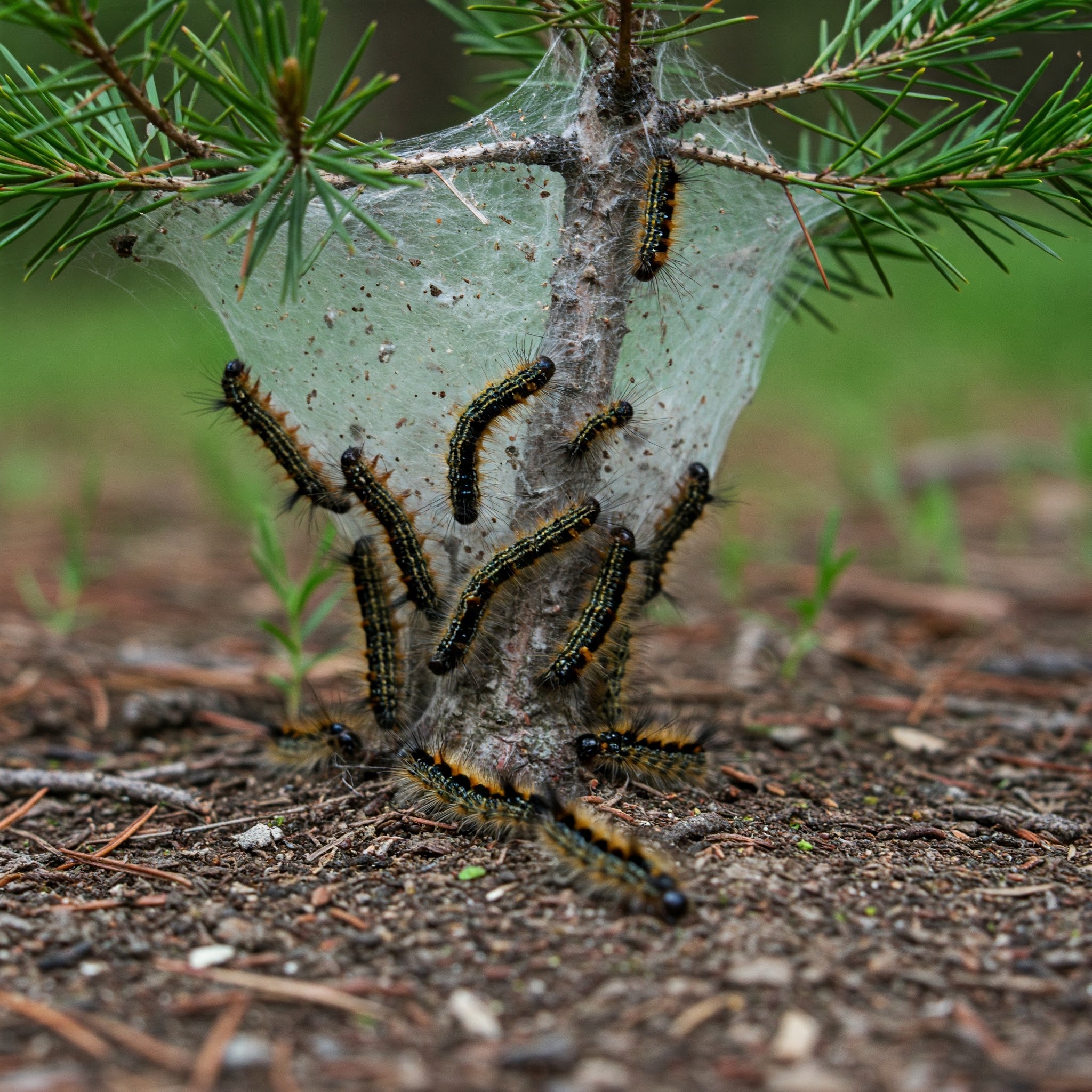Pine Processionary Caterpillar: The Hidden Danger in Forests

Pine forests are fascinating ecosystems and essential for biodiversity. However, hidden within them lies a danger that gains prominence every year: the pine processionary caterpillar (Thaumetopoea pityocampa). This caterpillar is not only a threat to trees but also poses a risk to wildlife, pets, and humans. In this article, we will explore what the pine processionary caterpillar is, the damage it causes, and how we can combat it using natural methods, highlighting the role of bird and bat nests in its biological control.
What is the Pine Processionary Caterpillar?
The pine processionary caterpillar is a species of moth belonging to the Lepidoptera family. It is characterized by its peculiar behavior of moving in a single-file line, hence its name. Its life cycle begins when adult moths lay eggs on pine treetops in late summer. After hatching, the larvae develop, forming the characteristic silk nests in the trees until, with the arrival of spring, they descend to the ground to bury themselves and complete their metamorphosis.
Dangers of the Processionary Caterpillar
The danger of the pine processionary caterpillar lies not only in its environmental impact but also in the harmful effects it has on human and animal health:
- Threat to trees: The larvae feed on pine needles, weakening trees and making them more vulnerable to pests and diseases.
- Toxicity for humans and pets: Their urticating hairs can cause severe allergic reactions, skin irritation, and respiratory problems.
- Impact on local wildlife: Some insectivorous birds can become intoxicated if they ingest them, disrupting the ecosystem balance.
Natural Methods to Combat the Processionary Caterpillar
Traditionally, chemical treatments have been used to control the pine processionary caterpillar, but these can negatively impact the environment. Fortunately, there are ecological and sustainable methods that help keep the pest under control without compromising biodiversity.
1. Installing Bird and Bat Nests
One of the most effective and natural ways to reduce the population of pine processionary caterpillars is to encourage the presence of natural predators, such as certain birds and bats. Installing nest boxes is a simple and highly beneficial strategy.
Insectivorous Birds: Natural Allies
Some birds, such as great tits (Parus major), blue tits (Cyanistes caeruleus), and Eurasian nuthatches (Sitta europaea), feed on processionary caterpillars. Placing birdhouses in forested areas promotes nesting, increasing their presence and contributing to the biological control of the pest.
Benefits of Bird Nests:
- Reduction of processionary caterpillar populations without the need for pesticides.
- Increase in biodiversity and ecosystem balance.
- Attraction of beneficial birds that also consume other harmful insects.
Bats: Nocturnal Guardians of the Forest
Bats are great insect consumers and play a crucial role in controlling forest pests. Installing bat boxes in pine forests can help reduce the population of adult processionary moths, preventing them from reproducing in large numbers.
Advantages of Bat Shelters:
- Elimination of processionary moths before they lay eggs.
- Regulation of other nocturnal pests that affect vegetation.
- Protection of a key species in ecological balance.
2. Pheromone Traps
Pheromone traps are an effective and ecological technique to disrupt the reproductive cycle of the pine processionary caterpillar. These traps attract males, preventing them from fertilizing females, which reduces the number of eggs laid in trees and, consequently, the proliferation of caterpillars.
3. Manual Removal of Silk Nests
During the winter, the silk nests that house the caterpillars can be manually removed from the trees to prevent their spread. This method must be carried out with caution and using proper protective equipment to avoid contact with the urticating hairs.
4. Use of Entomopathogenic Fungi
Certain fungi species, such as Beauveria bassiana and Bacillus thuringiensis, act as natural bioinsecticides by infecting and eliminating the caterpillars without affecting other beneficial organisms in the ecosystem. Their application on trees has proven to be an effective and safe method for reducing the processionary caterpillar infestation.
5. Protection of Native Wildlife
In addition to installing nests and shelters, it is essential to preserve the natural habitats of the pine processionary caterpillar’s predator species. Avoiding deforestation and reducing unnecessary pesticide use allows birds, bats, and other beneficial insects to maintain a balanced caterpillar population.
Conclusion
The pine processionary caterpillar is a pest that threatens forests and poses a health risk to people and animals. However, its control does not have to rely solely on aggressive chemical methods. Installing bird and bat nests, using pheromone traps, manually removing nests, and applying entomopathogenic fungi are natural and effective strategies to combat this threat without compromising the ecosystem.
Opting for ecological solutions and promoting biodiversity not only protects forests but also contributes to the natural balance of the environment. Small actions, such as placing a nest box or reducing pesticide use, can make a significant difference in the fight against the pine processionary caterpillar and ensure the long-term health of our forests.









